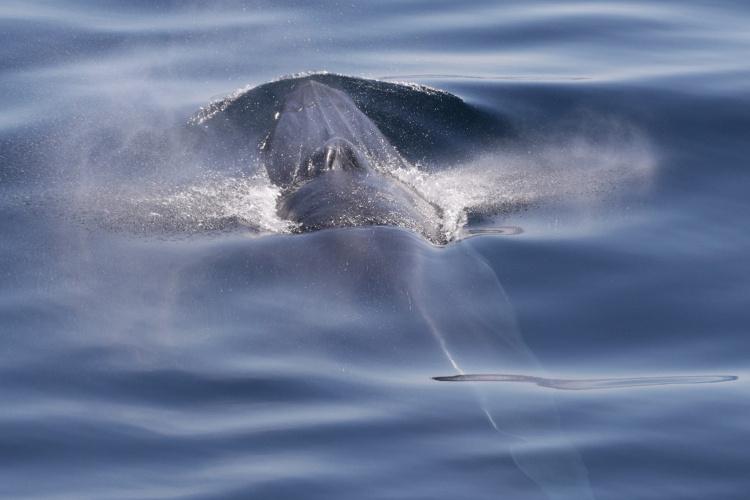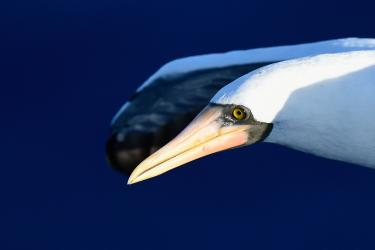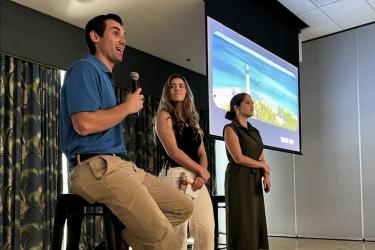On May 29th, 2019, NOAA scientists and partners embarked on the NOAA ship Gordon Gunter for the third in a series of ship-based research cruises. They will collect data on the foraging relationships between Gulf of Mexico Bryde’s whales (GoMex Bryde's whales, renamed Rice's whale in 2021) and the other organisms using the same habitat.


Researcher, Laura Dias, photo documenting a sighting.*
Other research techniques include testing small, unmanned aircraft systems (commonly referred to as “drones” or sUAS). We use these to collect images from directly overhead GoMex Bryde's whales while they are at or near the surface. We will also be collecting water samples to test for “environmental DNA” (eDNA). This eDNA approach analyzes water samples collected both near whales and in schools of potential prey near the bottom. We will use it to determine if we can identify genetic material left behind by these animals in their environment. This technique may provide another method for us to determine where these whales are located elsewhere and which prey species are important to them.

It was a busy first week or so as we loaded and set up all the required equipment, calibrated instruments and made all the preparations for the various aspects of this cruise. For the next several weeks, we will be posting field notes from the expedition, so follow our activities if you want to hear more about some our research activities, like the use of sUAS to take overhead images to help develop the tools for assessing the health of individuals in this population.
Meet the Team

*All photos were taken under NOAA research permit #14450-05 and 21038, issued by the NMFS Office of Protected Resources to the SEFSC Marine Mammal Program.
Meet the Bloggers
Debra Abercrombie
Debra contributed to this blog in a big way but has since taken a position with the U.S. Fish and Wildlife Service.
Tony Martinez
Anthony Martinez is a senior research scientist that has been actively developing and leading scientific expeditions throughout his career with NOAA. Mr. Martinez brings a deep and varied base of experience and a multi-disciplinary skill set to his position. His unique combination of skills and experience has been invaluable in accomplishing many of NOAA's scientific research goals throughout his career.





